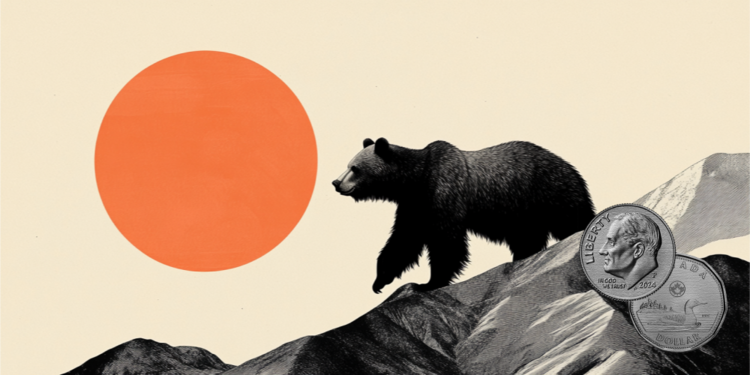USD/CAD extends its losses for the second successive session, trading around 1.4000 during the Asian hours on Wednesday. The pair loses ground as the commodity-linked Canadian Dollar (CAD) receives support from the higher Oil prices.
West Texas Intermediate (WTI) Oil price gains ground for the second successive day, trading around $57.70 per barrel at the time of writing. Crude Oil prices appreciate after an industry report showed falling stockpiles.
American Petroleum Institute (API) data indicated US inventories fell 2.98 million barrels last week, the first decline in four weeks. Additionally, US President Donald Trump reiterated that India plans to reduce its Russian Oil purchases.
The USD/CAD pair also faces challenges as the US Dollar (USD) declines amid concerns over a prolonged federal government shutdown and potential delays in key US economic data releases, including Nonfarm Payrolls (NFP), adding uncertainty for financial markets and the Federal Reserve (Fed).
The US government shutdown has entered its fourth week as the Senate on Monday failed for the 11th time to advance a House-passed measure to fund the government and end the ongoing shutdown. The 50-43 vote fell mostly along party lines. This marks the third-longest funding lapse in modern history.
A Reuters poll suggested that 115 out of 117 economists have predicted that the Fed will reduce interest rates by 25 basis points (bps) to 3.75%-4.00% in the monetary policy announcement on October 29. For the year, 83 of 117 economists expect the US Federal Reserve to cut interest rates twice, while 32 anticipate one cut.
Canadian Dollar FAQs
The key factors driving the Canadian Dollar (CAD) are the level of interest rates set by the Bank of Canada (BoC), the price of Oil, Canada’s largest export, the health of its economy, inflation and the Trade Balance, which is the difference between the value of Canada’s exports versus its imports. Other factors include market sentiment – whether investors are taking on more risky assets (risk-on) or seeking safe-havens (risk-off) – with risk-on being CAD-positive. As its largest trading partner, the health of the US economy is also a key factor influencing the Canadian Dollar.
The Bank of Canada (BoC) has a significant influence on the Canadian Dollar by setting the level of interest rates that banks can lend to one another. This influences the level of interest rates for everyone. The main goal of the BoC is to maintain inflation at 1-3% by adjusting interest rates up or down. Relatively higher interest rates tend to be positive for the CAD. The Bank of Canada can also use quantitative easing and tightening to influence credit conditions, with the former CAD-negative and the latter CAD-positive.
The price of Oil is a key factor impacting the value of the Canadian Dollar. Petroleum is Canada’s biggest export, so Oil price tends to have an immediate impact on the CAD value. Generally, if Oil price rises CAD also goes up, as aggregate demand for the currency increases. The opposite is the case if the price of Oil falls. Higher Oil prices also tend to result in a greater likelihood of a positive Trade Balance, which is also supportive of the CAD.
While inflation had always traditionally been thought of as a negative factor for a currency since it lowers the value of money, the opposite has actually been the case in modern times with the relaxation of cross-border capital controls. Higher inflation tends to lead central banks to put up interest rates which attracts more capital inflows from global investors seeking a lucrative place to keep their money. This increases demand for the local currency, which in Canada’s case is the Canadian Dollar.
Macroeconomic data releases gauge the health of the economy and can have an impact on the Canadian Dollar. Indicators such as GDP, Manufacturing and Services PMIs, employment, and consumer sentiment surveys can all influence the direction of the CAD. A strong economy is good for the Canadian Dollar. Not only does it attract more foreign investment but it may encourage the Bank of Canada to put up interest rates, leading to a stronger currency. If economic data is weak, however, the CAD is likely to fall.
https://www.fxstreet.com/news/usd-cad-falls-to-near-14000-as-oil-prices-extend-gains-on-falling-stockpiles-202510220312




